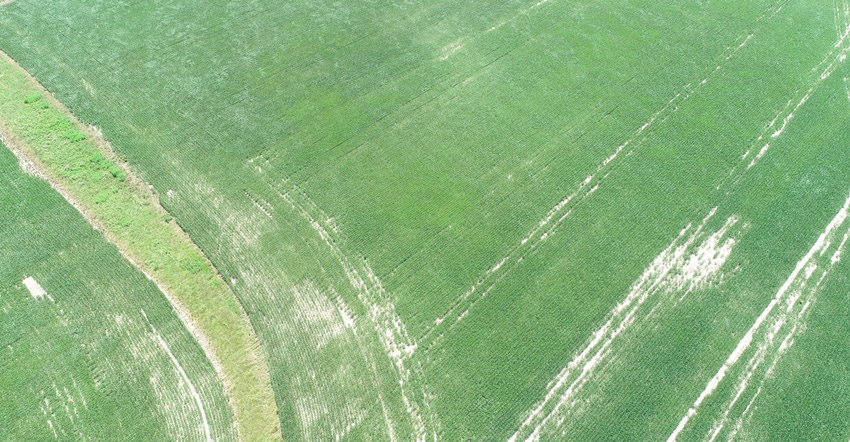
If you walked the Soybean Watch ’18 field near the end of July, you might have pegged yield potential at 60 to 65 bushels per acre. Plants were in the early pod stage. The final call on yield would depend on rain during August, notes Steve Gauck, a Beck’s sales agronomist based near Greensburg, Ind. Beck’s sponsors Soybean Watch ’18.
Those rains came at opportune times. When Gauck returned in late August, he found plants putting on pods all the way to the top, with three beans per pod and even a few pods with four beans. Did Gauck raise his yield expectations? Not necessarily. There are two main reasons why he’s uncertain how yield will turn out.
UAV flight
The first reason relates to the unmanned aerial vehicle flight he made over the field during his late-July visit after he walked it. Gauck has his Federal Aviation Administration Part 107 license certification to fly a drone for commercial purposes. He typically flies a DJI Phantom 4 Pro.
“We saw things in the images which we couldn’t see either very well or at all just walking in the field,” he says. “You can’t easily walk an entire 80-acre field of soybeans even in late July, let alone in late August. These were planted in 15-inch rows, and once beans canopy over and get sizable vegetative growth, it’s difficult to walk through them and see over large areas.”
That’s the beauty of the drone, Gauck says. With a 20-minute flight, he could see all parts of the field, not just where he scouted. Since this field has a rise in the middle, it’s difficult to see the rear part of the field unless you walk that area.
“The camera on the drone sees it, and I watched it live,” he recalls. “There was a drier area in the back where there was some stress. We also saw areas where some field passes at some point were leading to reduced vegetation. The tracks were obvious. You could also pick up differences in color, even within the same variety.”
Ideally, once you fly a field with a UAV, you can then use GPS to walk to the exact spots where you noted something out of the ordinary, he says.
“There were enough hiccups here and there that you probably start backing yield potential off a few bushels per acre based on new information,” he notes.
Sudden death syndrome
The other discovery Gauck made during his late-August visit was several plants showing signs of sudden death syndrome. “It wasn’t widespread, but it was definitely in the field,” he says.
Three varieties were planted in the field. The bulk of the field was planted to a variety treated only with ILeVO, which helps protect against SDS. The other two varieties were treated with a good seed treatment package, but not with ILeVO. The farmer chose ILeVO for the primary variety because he had seen SDS in the field before.
“It’s difficult to tell if it will have much effect in this field,” Gauck says. “Even affected plants may still produce some beans — they will be smaller.” If the entire field were showing symptoms, it would be a much larger concern, he adds.
About the Author(s)
You May Also Like




